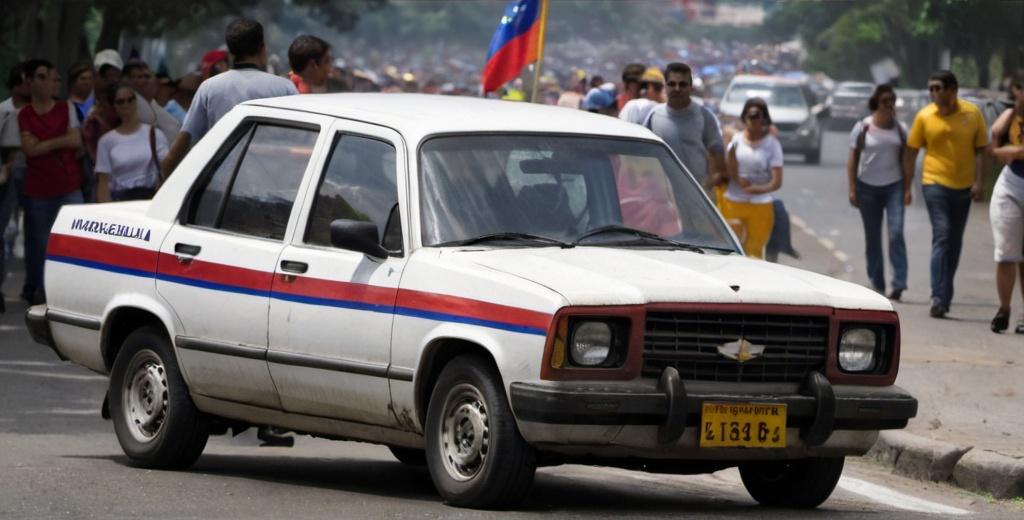Getting to Venezuela is very doable, but not always straightforward. Flights are limited, land borders are unreliable, and booking platforms often show incomplete options due to sanctions or airline policy. Still, thousands of people—business travelers, returning nationals, journalists, and adventurous investors—enter the country every month without issue. You just need to know which airlines fly, from where, and how to prepare for entry.

Entering by Air: The Most Reliable Option
Flying is the only consistently stable way into Venezuela. The main international gateway is Simón Bolívar International Airport (IATA: CCS), better known as Maiquetía, located just outside Caracas. Most commercial flights into Venezuela arrive here, though there are a few international routes into Maracaibo, Valencia, and Barcelona.
Major Airlines Flying Into Venezuela (as of 2025):
- Conviasa: Venezuela’s state airline, offers flights to and from:
- Madrid
- Moscow
- Mexico City
- Panama City
- Havana
- Bogotá
- Tehran
- Turkish Airlines: Istanbul ⇄ Caracas (with a fuel stop in Havana)
- Copa Airlines: Panama City ⇄ Caracas, Maracaibo, Valencia
(most consistent, reliable option for connections from North America or Europe) - Iberia / Air Europa: Madrid ⇄ Caracas
(limited schedules, sometimes seasonal or subject to cancellation) - Laser Airlines / Estelar / Avior (Venezuelan private airlines): Regional routes from:
- Dominican Republic (Santo Domingo)
- Panama
- Colombia (Medellín, Bogotá)
- Aruba
- Trinidad & Tobago (when permitted)
Flight availability and routing change frequently. Airlines adjust schedules based on sanctions, political conditions, and demand. Always confirm with the airline directly and avoid assuming connections are stable just because they’re listed online.
Entering by Land: Technically Possible, But Risky
From Colombia:
The main crossing is through San Antonio del Táchira, connecting to Cúcuta in Colombia. This border is frequently closed or restricted, sometimes for months at a time. If open, you can cross by foot and take domestic transport into San Cristóbal, then onward to other Venezuelan cities.
You’ll need:
- Valid passport
- Visa (if your nationality requires one)
- Entry permit processed by local immigration (can take time and patience)
The crossing is legal but not always safe or fast. Smuggling routes, informal checkpoints, and unofficial taxis are common. Many locals use these crossings for daily trade or personal travel, but tourists or investors are advised to use air routes unless guided by local contacts.
From Brazil:
Entry is possible via Santa Elena de Uairén (Venezuelan side) and Pacaraima (Brazilian side). This route is more stable than the Colombia one but remote and lacks tourist infrastructure. Most travelers using this route are Venezuelans returning home or Brazilians working in border communities.
What Documents Do You Need?
- Passport with at least 6 months of validity
- Visa, if your country is not on the visa-free list
- Return or onward ticket
- Proof of accommodation (hotel booking or invitation letter)
- Vaccination card (COVID-19 requirements have eased, but some officials still ask)
- Cash: Preferably USD or EUR. Credit cards issued outside Venezuela usually do not work.
Important: Always carry physical copies of your documents. Internet access at Venezuelan airports is unreliable, and phone-based documents may not be accepted.
Arrival Tips
- At Caracas airport (Maiquetía), immigration can be slow. Expect questioning about your reason for visit, length of stay, and where you’ll be staying.
- There are often currency exchange kiosks on arrival, but rates are poor. Best to bring USD in small denominations.
- Avoid unofficial taxis. Prearranged transport is strongly recommended—Maiquetía to Caracas is a winding 30–40 minute drive, often through areas with limited police presence.
- SIM cards and mobile data are available at the airport from Movistar or Digitel, but lines can be long.
Special Notes for U.S. and Canadian Citizens
- Tourist visas are required and must be obtained in advance. There is no visa on arrival. Venezuelan consulates in the U.S. may be unresponsive or non-functional, so some travelers apply in third countries like Mexico, Spain, or Colombia.
- Entry is not banned, but travelers from the U.S. are often questioned more thoroughly.
How Venezuelans Return to the Country
Venezuelan passport holders returning home can enter without issue, even with expired passports in some cases. There are regular repatriation flights and bilateral routes from countries like Colombia, Chile, and the Dominican Republic for Venezuelan nationals.
Final Advice
Getting into Venezuela in 2025 is more about logistics than legality. If you have the right passport or visa and fly through the right hubs, you can get in easily. But don’t expect a seamless experience. Booking through Copa via Panama or Turkish Airlines via Europe tends to be the safest bet for most travelers.
If you’re traveling for investment, due diligence, or on-site asset review, Orenoque Invest coordinates client entry, handles local transport, and provides logistical support—including document prep and customs facilitation—so your time in-country is productive, secure, and not lost navigating entry delays or miscommunications.